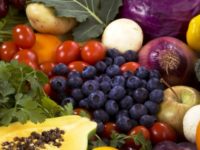 How can you make dry the new fresh?
How can you make dry the new fresh?
The rise and rise of “Fresh”
“We’ve actually seen a 55% increase in the number of food and drink launches in Australia with an ‘On the Go’ claim between 2012 and 2016,” said Justin Nell (Mintel) on Australian food trends for 2017.
Fresh is on the rise and the demand for it just keeps increasing. This is no secret. Fresh is taking up more and more supermarket real estate, at the expense of ambient produce. Today’s time-poor consumers want the convenience of fresh meals, which they don’t have to prepare, or meals, which at the very least require only, limited preparation.
Although frozen options are a potential solution, and have been fast options for decades this is not the answer. Frozen is often consumers as less healthy and less tasty than the current “fresh” alternatives. In many instances frozen food sales have only risen slightly (Simplot) and in some cases have even slumped, as consumers reach for fresher, healthier and perceived higher quality items. The bad press re the dangers of microwave cooking has also impacted the growth of frozen produce.
Processed food has become increasingly unpopular
For the same drivers of why Fresh has become so popular, processed food has become increasingly unpopular. The fact is, if FMCG brands want the consumer to buy what they are selling, then they must make products customers actually want to buy. Changing lifestyle habits have meant that Australians no longer want artificial and highly processed ingredients in their food.

This is a worldwide back to basics trend, not just an Australian anomaly. As label scrutinization becomes more prevalent, aware consumers now know exactly what level of nutrition is going into their food. “Natural” untainted food products have become more and more important to even the slightly less health conscious shopper. This has added fuel to the demand for more “fresh”. The consumer-driven shift toward fresher, cleaner foods isn’t just a trend or simply a fad. Rather it’s a movement that is here to stay.
“The new food consumer is moving toward fresher, cleaner labels, and transparency is king,” Suzanne Ginestro, chief marketing and innovation officer at Campbell Soup’s C-Fresh division.
Conclusion: The consumer is looking for a healthier, quality and tastier home food options that fit in with their busy lives.
Convenience is killing the weekly grocery shop
“When young Australians buy food, they try to strike a balance between wanting fresh, high-quality produce and wanting convenient options which can cut down on meal-preparation time,” said Shaun Lindhe of AUSVEG.
There has been a massive shift in demand for grocery products that reduce cooking times and which simplify food preparation from scratch. Hence the explosion of “on the go” food options. This fast and convenient shopping mindset has resulted in substantial product and packaging innovation.
As a consequence of these changing consumer preferences, the frequency and purpose of shopping trips have also radically changed over the past decade. A survey conducted by AUSVEG’s Project Harvest has revealed the once a week grocery shop is now all but dead with shoppers now making multiple trips to the grocery store in a week. It seems that 80% of Australians will buy their vegetables throughout the week.
AUSVEG spokesperson Kert Hermann said, “Australians are treating supermarkets like extensions of their own fridges. Consumers are only planning a couple of meals ahead, because they’ll return in a night or two.”
Shifts in household composition have also added to the demand for “fresh” produce in our supermarkets. Smaller households (singles, couples) and urban consumers in particular want healthier, fresh and tastier products.
Conclusion: Time poor Australian consumers want fresh and convenient solutions and are willing to make regular trips to the grocery store to get these needs met.
Fresh at a price
Food is one of life’s little pleasures but are we willing to compromise based on price? Today’s supermarket on-the-go lifestyl
According to a Nielsen Study, price is the top driver of store switching behavior. The global study reports that, 68% say price, followed by quality (55%) are store-switching motivators. In Asia-Pacific, price is the top driver of store switching, but it’s below the global average (63% vs. 68% globally)
Conclusion: So yes, as a consumer I want fresh and healthy, I do not want to compromise on quality. But … I also want it at a price that I see as good value for money!
The price we pay for fresh
Over the last ten years there have been significant advances in food technology enabling “fresh on the go foods” to enjoy a longer shelf life than before. However there is still a large gap between the shelf life of fresh or “perishable” foods and that of ambient shelf products, or non-perishable goods.
Despite the fact, there has been a significant improvement to supply chain, which has revolutionized the speed and scale of food delivery. Meaning the shelf life of fresh is much longer for most products than it once was. There is still a significant economic differential between the cost to store between ambient and dry food and “fresh on the go” packaged produce.
Then there are the additional economics associated with handling and display requirements plus in-store servicing of “fresh” product lines. So obviously increased shrinkage, labour and capital costs all require charging higher gross margins to cover these investments. This translates into higher costs on the retail shelf.
Increased shelf life can still be “fresh”
Consumers are looking for “fresh” or “fresh-like” foods that can be purchased and eaten with little preparation. It should be noted that not all ambient products are full of preservatives. Technologies and improvements in vacuum packaging, hot filling, drying, irradiation and oxidation have all proven highly effective in managing bacterial control, colour stability, yeast and mould inhibition, flavour stability, textural stability and aroma stability.
This means that ambient product that was previously loaded up with preservatives; sugars and salts can now sustain a longer shelf life and still be “fresh-like”. As trusted brands you still need to demonstrate authenticity and stay true to your brand promise. In other words you should never present a pack that looks ‘fresh’ if it was full of nasties… Historical FMCG brands that have very artificial looking packaging can move away from this look and feel and the immediate perception of being artificial. They can lean leaning on other sensory drivers such as tasty and authentic if they are unable to focus on fresh.
Conclusion: Consumers are wanting “fresh” on a budget. This spells out significant opportunities for brand marketers who are able to give their ambient produce a “fresh” look and feel, whilst still being authentic to their brand promise.
Does “fresh” really have to be fresh?”
Like “natural”, the term “freshness” gets bandied about so frequently by food marketers that it has lost its impact on consumers. That said, there is a way brand marketers can apply learning’s from their “fresh-on-the-go” marketing to “crack the fresh code” for their ambient produce. They need to employ similar marketing and merchandising tactics to those they use for marketing and moving fresh produce.
If your product/brand were a person, wouldn’t they want new clothes every now and then, some new shoes to go with the new jeans. The same is true for your ambient or dry product on the shelf. It too needs to stay relevant and up-to-date.
This means finding ways to create attractive on-shelf displays and alluring see-through packaging. Piggy-backing off the “fresh” growth movement requires investing in engaging relevant displays and signage, along with ensuring your packs are regularly kept up to date. These actions all contribute to the consumer’s perception and to their desired impression of freshness. Refreshing the look and feel of ambient and dry shelf products is essential to optimize on-shelf sales.
Conclusion: Looking fresh in a sea of beige sameness on shelf and coming up with creative ways to demonstrate “ambient freshness” are essential for taking back your share of stomach.
False fresh isn’t fresh it’s just fake
If you’ve ever bought a frozen pizza because of the eye candy food porn image on the front of the pack only to discover once you open it that it was way over promised, then you’ll understand that “false fresh isn’t fresh it’s just fake!”
Yes you want your dry packs to garner the perception of fresh but that has to be done without being seen to make false promises. There are numerous ways and design strategies that can be employed to demonstrate “fresh” and on-the-go without resorting to selling something that it quite obviously full of nasties.
Remember the simple rule for selling off the retail shelf. Basically consumers scanning the shelves are being assaulted with by a blizzard of visual sensory data. In just milliseconds they process this data and make decisions. The consumer’s subconscious brain has simplified the process by scanning for a) what’s familiar and b) what’s different.
Conclusion: Don’t simply dress up your packs only to let your consumer down once they get your product home. Authenticity is still key.
Making dry the new fresh
Today’s consumers are guided by freshness, quality expectations and good value for money. The challenge is how do brand marketers and designers communicate “freshness” at the shelf when there are just a few seconds to get noticed and make an impact. So yes, whilst the opportunity for brands to drive shelf sales in dry exists by creating perceived “freshness” for their products, putting lipstick on a pig does not change it from being a pig.
Consumers tend to be sceptical about claims and expect “fresher” foods to be far simpler and cleaner visually. Examples of this are being able to preview inside and see the food within the pack. This is a great builder of trust. The packs simple design or pack form can also reflect messages of simplicity and purity (and freshness) of the food. Less is more.
Wearing your heart of your brand on your sleeve
Sure for some brands and products are able to show up as “fresh” in an ambient on-shelf environment. That said, there’s a large segment of FMCG brands that can’t be ”fresh” without overpromising and under-delivering. In essence not being authentic and true to themselves.
Being clear on your brand essence, knowing what your emotional connection is essential for owning space in the ambient market. Translating the heart and soul of your brand authentically across all your brand touch points can inject new life into your packaging formats and design, redefining the ambient space you compete in.
Traditional FMCG marketers need to step out from their traditional myopic thinking and traditional positioning. They should take lessons from fresh prepared food “winners” and look to re-inspire their ambient product packs. Brand marketers need to find credible and ownable ways to inject fresh life into the dry shelf space. They need to focus on attributes they can own. Attributes like taste … , which can be cued through the use of fresh ingredients on pack (think One Night In Mexican Taco kits).
Conclusion: There is no doubt that the “fresh” on-the-go food movement will translate to consumers shopping habits in this underserved area.
Have you lost your way?
Many traditional brands have lost their way and are finding it tougher to sustain their on shelf presence and profitability. This is especially true in the ambient/dry sections of the supermarket. Over the years many brands and products have had various different facelifts.
Often boredom or the “not invented here” syndrome is the cause, as new managers take over the direction of a brand or product. They want to put their own stamp on it. There are also times when a brand or product was created to ‘fit’ with one product or market and it no longer works. For a whole host of reasons brands have lost their way and are fading into on-shelf obscurity.
The essence of the brand, the emotional connection, the heart and soul of the brand has been eroded and concealed from the target consumer. The growth of “fresh” might well be the very catalyst required to clarify and restate what the brand is there to do. Now is the opportunity for brand marketers to revive their ambient products.
Will you miss the “fresh” movement?
Leading marketers don’t concern themselves with who follows in their direction. Instead they go where they need to go. They head in the direction they need to head because they know what direction is right for their brand and product because they have a strong understanding of the single thing their brand stands for.
Conclusion: Those brand marketers that adopt a wait and see how this trend develops will miss out to those innovative a creative brands who are willing to take the calculated risk of breathing “fresh into their dry”.
Ian Segail is the General Manager – Operations at Sydney-based branding, packaging and design agency Jam&Co.















